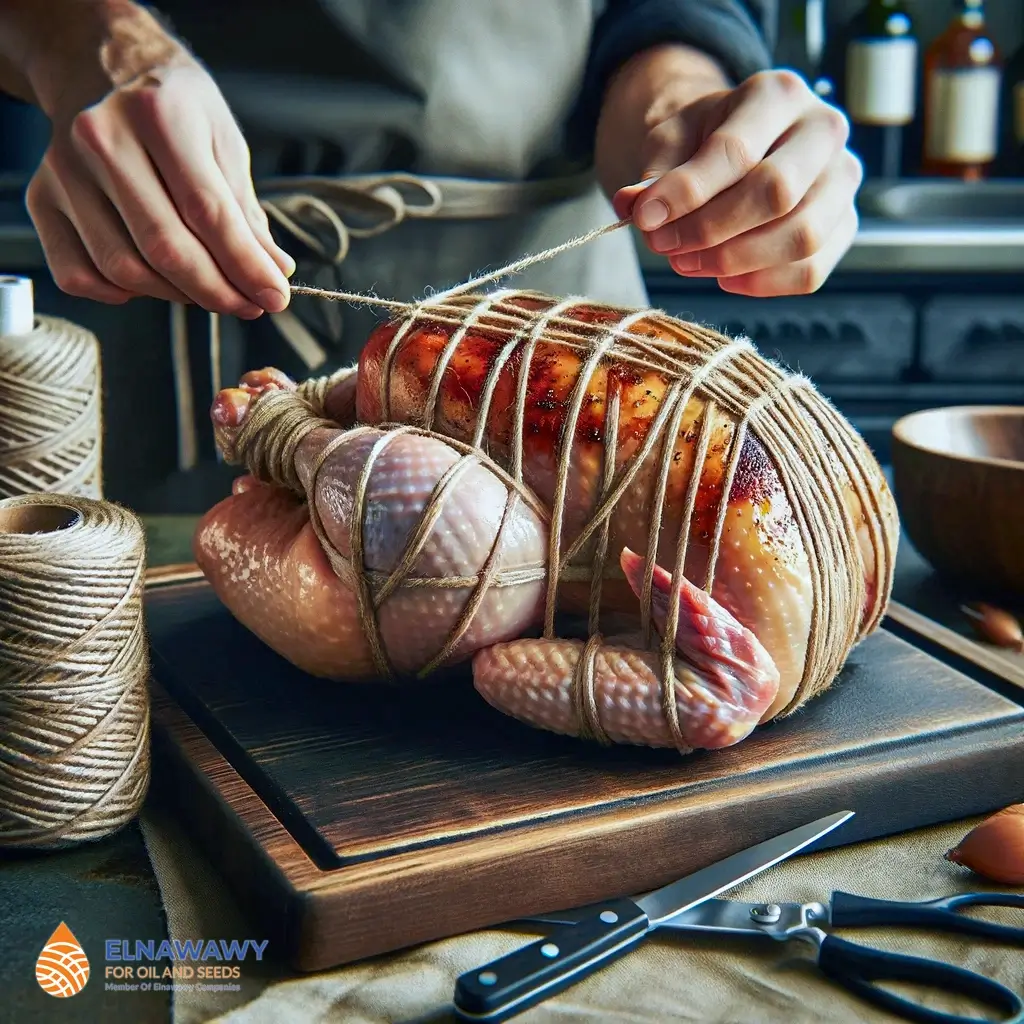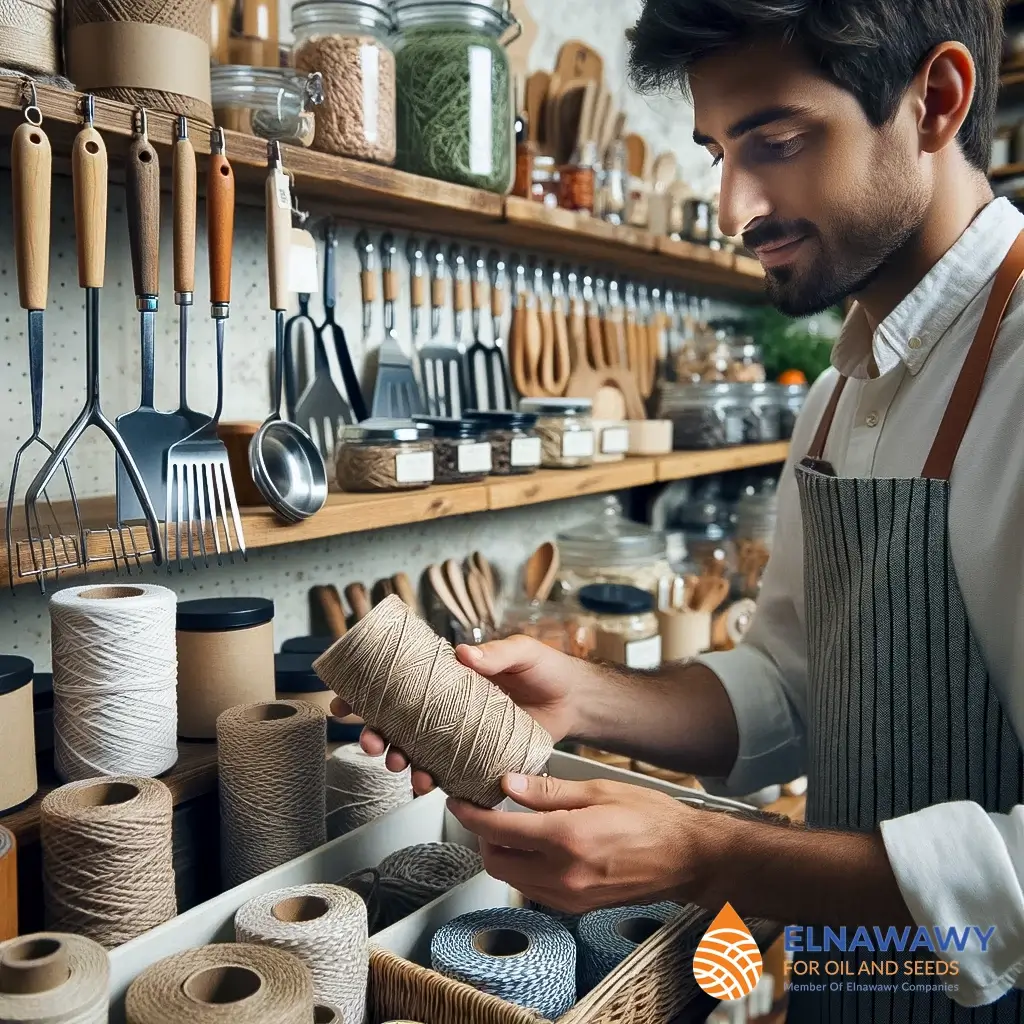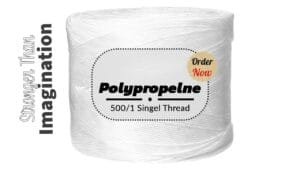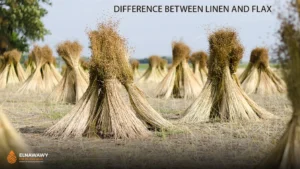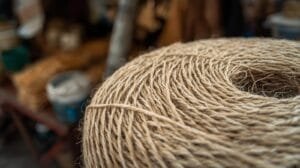Linen Butchers Kitchen Twine is a staple in both professional and home kitchens, prized for its strength, purity, and centuries-old culinary tradition. Whether you are a chef, butcher, or barbecue enthusiast, the right twine ensures your food cooks evenly, stays secure, and looks beautifully presented.
At ELNAWAWY Company, we blend over 50 years of Egyptian craftsmanship with sustainable innovation, offering premium linen twine trusted worldwide.
What Is Butcher’s Twine?
Butcher’s twine—sometimes called kitchen string or trussing twine—is a
strong, oven-safe cord used in cooking to keep food compact and secure.
It helps meats and poultry cook evenly, keeps stuffing in place,
and ensures a neat, professional presentation.
- Truss the poultry for even roasting
- Tie roasts and stuffed meats
- Secure sausages, roulades, and charcuterie
- Bundle herbs (bouquet garni) for soups and stews
- Suspend meats for smoking or curing
Note: Only use food-safe, oven-safe twines made from natural fibers
like linen or cotton. Learn more about our history on the
About Us page.
Quality and Food Safety Standards
Premium linen butchers kitchen twine meets the highest kitchen quality and safety standards.
It is specifically designed for professional cooking environments where strength, hygiene, and reliability are essential.
- Food-Safe Certified – fully HACCP-compliant and safe for direct food contact
- Heat-Resistant up to 240°C – perfect for roasting, grilling, scalding, and smoking
- Natural & Biodegradable – made from 100% flax yarn (pure linen)
- Chemical-Free – no dyes, waxes, or coatings that could affect taste or safety
- Professional Tradition – trusted by butchers and chefs for centuries
For more details, view our official certifications.
Why Choose Linen Butchers Kitchen Twine?
Among all types of kitchen twine, linen stands out for its unique combination of
strength, heat resistance, food safety, and
sustainability. It is the preferred choice for chefs and butchers who demand
reliability in every cooking process.
- Break-resistant – handles heavy roasts without snapping
- Heat-safe up to 240°C – won’t burn or melt during oven roasting or smoking
- Food-safe – free from synthetic chemicals and coatings
- Eco-friendly – biodegradable and fully sustainable
- Professional finish – ensures neat presentation and traditional appearance
Discover more in our article:
7 Reasons Egyptian Linen Is a Benchmark of Quality.
Quality and Food Safety Standards
Linen
Best Choice- Strength: High
- Heat Resistance: Excellent (up to 240°C)
- Food Safety: Yes
- Sustainability: Excellent
- Tradition: Centuries-old
Cotton
- Strength: Good
- Heat Resistance: Good
- Food Safety: Yes
- Sustainability: Good
- Tradition: Widely used
Rayon
- Strength: High
- Heat Resistance: Good
- Food Safety: Yes
- Sustainability: Moderate
- Tradition: Modern
Jute
- Strength: Low
- Heat Resistance: Poor
- Food Safety: No
- Sustainability: Good
- Tradition: Limited
Synthetic
- Strength: Variable
- Heat Resistance: Poor
- Food Safety: No
- Sustainability: Poor
- Tradition: None
Common Uses & Applications
Roasting & Trussing
Keep poultry and roasts compact for even cooking and better presentation. Ideal for turkey, chicken, lamb legs, and rib roasts.
- Truss poultry (legs & wings)
- Loop ties every 2–3 cm along a roast
- Finish with a secure butcher’s knot
Stuffed & Rolled Meats
Secure fillings in pork roulades, beef braciole, porchetta, and stuffed chicken breasts without tearing or slipping.
- Cross-tie every 3–4 cm
- Use 3-ply or 4-ply for heavy cuts
Smoking & Curing
Hang homemade hams, pancetta, or sausages confidently—linen is break-resistant and heat-safe up to 240°C.
- Meat hanging on hooks
- Thermal processing & smoking
Herb Bundles & Baking
Tie bouquet garni, secure parchment, or hold rolled pastries—linen is food-safe and flavor-neutral.
- Herb bundles for stews
- Baking roulades & layered dishes
Packaging & Non-Oven Uses
For tags, gift wrap, and rustic presentation, use linen or hemp. Note: hemp is not oven-safe.
- Food packaging & bakery boxes
- Herb bundles & curing labels
Ready to choose the right ply and spool size? Explore Premium Butcher’s Twine (Food-Safe & Oven-Safe).
Heat Resistance & Durability: Visual Snapshot
Heat Resistance (°C)
Higher bar = safer for roasting, grilling, thermal processing.
Note: Linen & cotton are oven-safe; jute and most synthetics are not recommended. Compare fibers in depth: Hemp vs Linen.
Strength & Durability (Relative)
Higher bar = more tension resistance for heavy roasts & hanging.
For oven use, choose natural, food-safe fibers. Ready to buy? See Premium Butcher’s Twine.
How to Truss a Roast (Step-by-Step)
- Prepare the roast: Pat dry. Place on a board with the cut seam facing up.
- Measure twine: Cut a length 6–8× the roast’s width (use 3-ply for 2–4 kg, 4-ply for heavier).
- Anchor knot: Slide twine under one end and tie a firm butcher’s knot.
- Loop and tighten: Create loops every 2–3 cm, pull snug (not cutting into the meat).
- Finish & trim: Tie off at the end, flip, and secure with a final knot. Trim excess twine.
- Roast: The compact shape ensures even cooking and a professional look.

